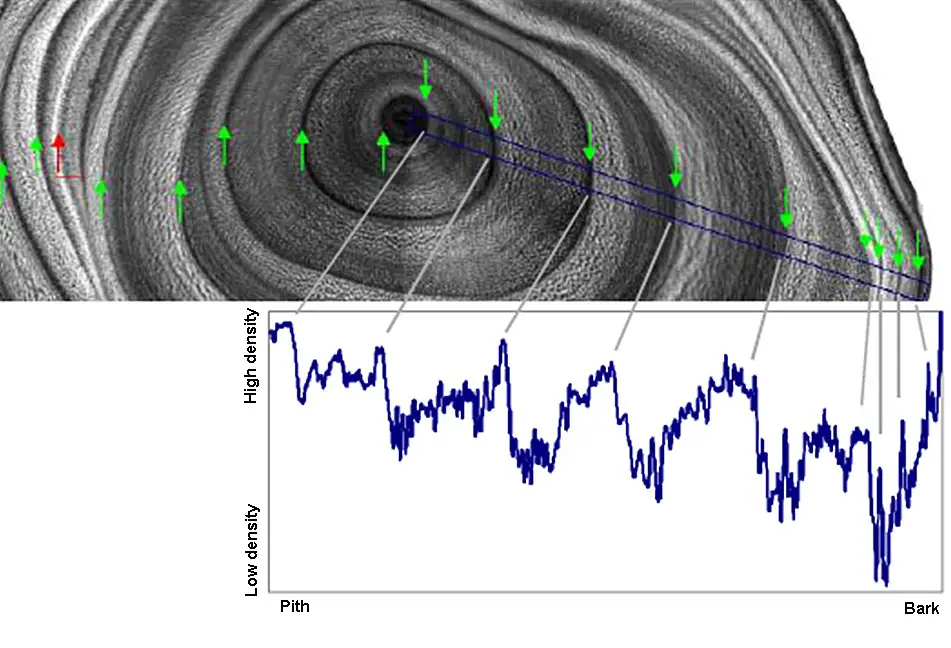Will the dating of the volcanic eruption of Santorini remain an unsolved mystery? The question whether this natural disaster occurred 3,500 or 3,600 years ago is of great historiographical importance and has indeed at times been the subject of heated discussion among experts.
After investigating tree rings, a team of scientists led by the WSL has concluded that the volcano erupted in the 16th century BC, rather than any earlier than that.

A number of research studies since the 1980s have indicated that the Greek island of Santorini’s volcano may have erupted not in the 16th century BC as traditionally thought but possibly in the century before that. If this dating had been confirmed, it would have involved rewriting the whole history of the cultural development of the eastern Mediterranean region. The latest evidence for antedating the eruption was supplied by a study from Denmark that used radiocarbon dating (14C dating) to examine olive wood from the period of the eruption.
However, an international team of researchers led by Paolo Cherubini from the Swiss Federal Institute for Forest, Snow and Landscape Research (WSL) has demonstrated in the scientific journal Antiquitythat this method cannot provide reliable results. The scientists show that 14C dating of individual pieces of olive wood enveloped by volcanic ash is too unreliable for precise dating.
“Investigating such wood samples only makes sense if it can be clearly shown that the trees were still alive at the time of the eruption. In the case of old olive trees in the Mediterranean region, it is not at all unusual for dead branches to stay in place for several decades,” says Paolo Cherubini. If 14C dating is carried out, it must use an international reference curve, which in the case of the period of the volcanic eruption is based on tree-ring measurements from trees that are more than 4,000 years old.

Olive trees produce many pseudo-tree rings
Paolo Cherubini has investigated wood from many olive trees in southern Europe and point out the limitations of tree-ring dating: “In warm regions like Santorini, with frequent dry periods in the summer and spring-like winters, olive wood often only produces tree rings that are difficult to identify. Instead, wood-density fluctuations are found inside certain rings.” These arise mainly in dry periods of the year. It is easy for even an expert to confuse such density fluctuations with actual annual tree rings. Consequently, a piece of olive wood dated as being 72 years old could instead be just 30 years old.
By way of a ‘blind test’, Cherubini recently asked 10 experts in five tree-ring laboratories in various countries to date the same wood samples from olive-tree branches. These came from trees growing today on Santorini. As expected, this produced sobering results: the number of tree rings found varied between laboratories by more than 44%. This unreliability alone makes precisely dating a piece of wood from the period of the eruption seem unrealistic.
Furthermore, the same amount of carbon isotope (14C) in a given sample can quite easily result in different dating results when comparing it with the reference curve, whereas only precisely dated tree rings would allow the age of the tree to be correctly determined. This leads Cherubini and his team of authors to conclude that using 14C dating to calculate the age of an olive wood branch has to be taken with caution.
According to Cherubini, the uncertainties mentioned above can easily give rise to differences of several decades in the dating of Santorini’s eruption. Therefore he believes that the hypothesis that Santorini’s volcano erupted almost a century earlier cannot be confirmed using current methods. In his opinion, answers are more likely to be found through interdisciplinary research involving close cooperation between archaeologists, climatologists, geoscientists, dendroclimatologists and historians, allowing a general view of the situation to emerge.
Contributing Source : Swiss Federal Institute for Forest, Snow and Landscape Research WSL






